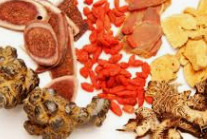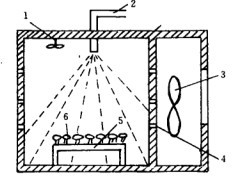Effect of drying process on Anthraquinone stability of rhubarb
Rhubarb, as a commonly used Chinese medicine, has a long history in Chinese medicine. It is the dried root and rhizome of Polygonaceae perennial herbs, such as Rhubarb palmatum, Rhubarb tanguticum or Rhubarb medicinal. It was found that the main chemical constituents were anthraquinones. In addition, tannins and a small amount of rhubarb glycosides and aglycones were also found.
Modern pharmacological studies have proved that anthraquinones in rhubarb have the functions of purging, protecting liver and gallbladder, anti-bacterial and promoting pancreatic secretion, inhibiting pancreatic enzyme activity and protecting pancreatic islets. They can be used to treat cholelithiasis, acute tonsillitis and acute pancreatitis in clinic.
Anthraquinones in rhubarb are the main active ingredients. Microwave drying equipment will affect the content of anthraquinones and the hygroscopicity of samples, thus affecting the quality and clinical application of the preparation. In this paper, the effects of drying process on the stability of anthraquinones were reviewed.
Microwave drying of traditional Chinese medicine is a method of drying materials by utilizing the high frequency transformation of magnetic field direction in which 300-300 000 MHz electromagnetic wave is located to make polar molecules move and friction, thus generating heat.


In microwave drying of rhubarb water extract, infrared spectroscopy was used to compare freeze-dried reference material and microwave-dried sample. The similarity of peak number and peak area was about 89% and 97%, respectively. The results showed that the content of anthraquinones in samples decreased, and the microwave drying power should be less than 10 Kw, otherwise the effective components in samples would be significantly affected (compared with other samples, the total anthraquinones decreased about 10 Kw). 13%).
Guo Sheng et al. found that the content of free anthraquinone (emodin and emodin methyl ether) in samples dried by microwave at low temperature decreased significantly compared with shade-drying, sun-drying, drying, freeze-drying and far-infrared drying. It may be that the thermal stability of free anthraquinone was poor, and the instantaneous high temperature of microwave drying caused its decomposition and destruction. As a result, the content decreased.
Other studies have shown that compared with spray drying and vacuum drying, the microwave drying product has less hygroscopicity and therefore has less influence on the stability of the target components. The process has the advantages of short drying time, uniform heating, high energy utilization rate, easy operation and control, but its high temperature will destroy the anthraquinones in rhubarb and affect the quality of rhubarb preparation.